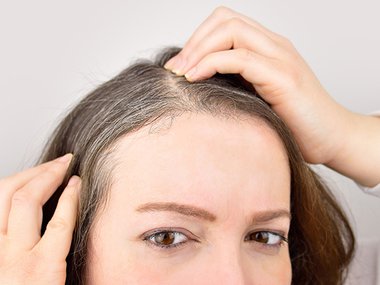Inspiring Future STEM Leaders: Careers in Neuroscience
If you could go back in time and tell your pre-teen self to select a STEM career, what job would you tell yourself to pursue? What STEM career would you tell a 12-year-old girl today to consider?
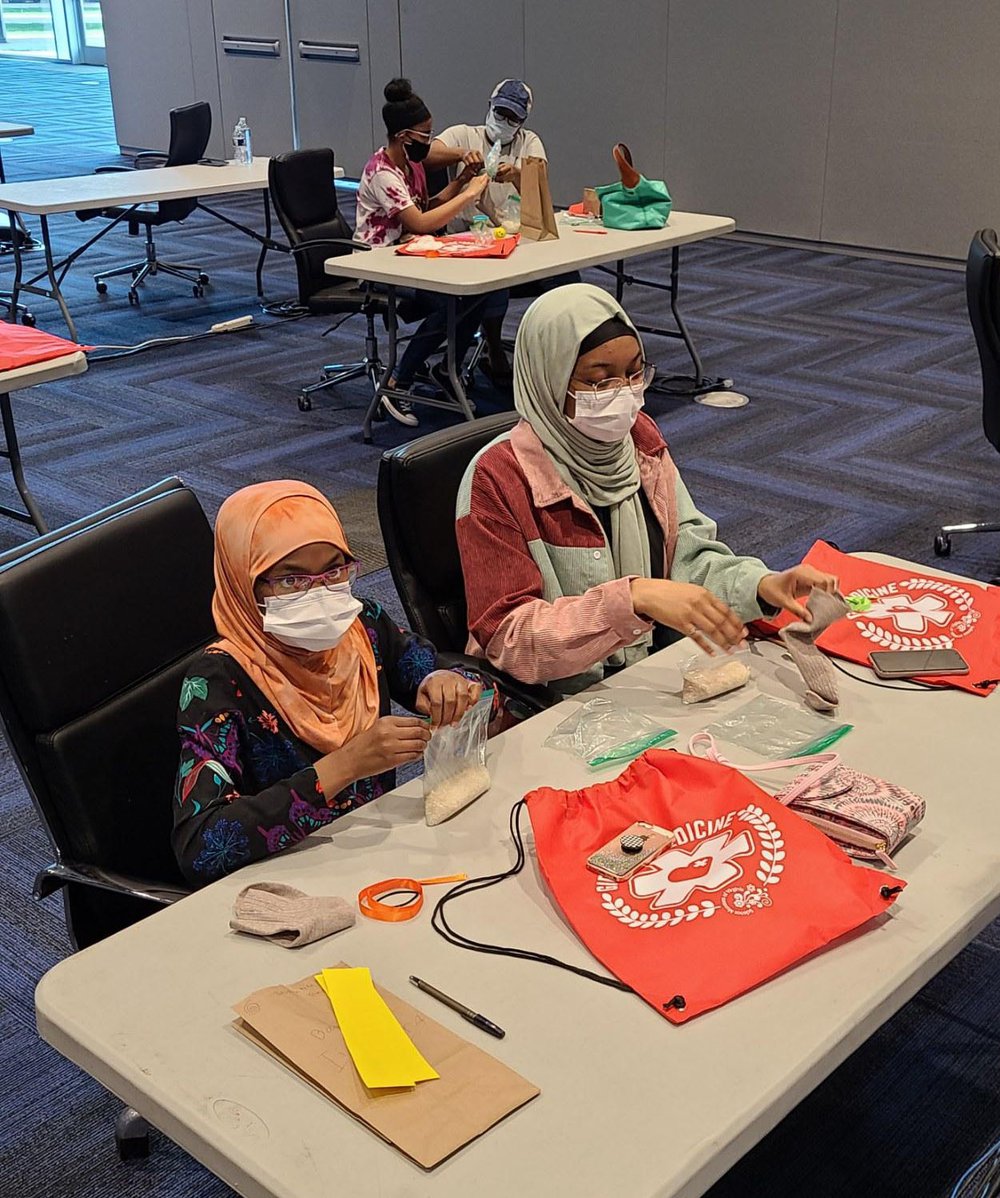
The Museum hosted our annual Girls in Medicine event recently, and the answers to those questions helped direct the conversations.
With a nod to our traveling exhibition Mental Health: Mind Matters, the event focused careers in medicine, including neuroscience and mental health. The event also focused specifically on inspiring girls to pursue STEM careers because despite making up nearly half of the U.S. workforce, women are still vastly underrepresented in the STEM workforce, only 27% as of 2019 according to the Census Bureau. In order to inspire girls to go into this line of work, they have to know what types of jobs are available.
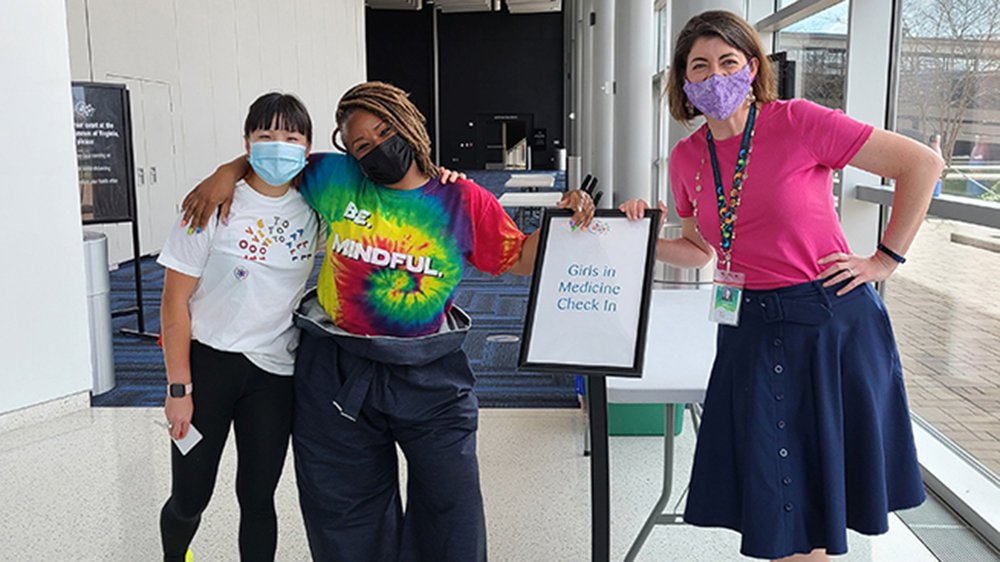
At the event, Mecca Williams, LPC provided the participants – middle and high school-age girls from across the state – with activities and insights from her professional perspective as a licensed professional counselor. Girls and their families reviewed key terminology related to therapy, participated in an activity to identify emotion words, reviewed strategies to reduce stress and approach challenges with calm, and participated in an activity designed to boost self esteem and be a reminder of their own positive attributes in times of distress.
To continue the stress management work, girls and their families created a sleep pillow with an activity and materials provided by the Cameron K. Gallagher Foundation, facilitated by the Museum’s Assistant Director of Education, Karen McKenzie, who organized the event.
Museum Scientist in Residence Dr. Catherine Franssen provided career insights and information about jobs in the medical field. Since the Medical College Admission Test (MCAT) revision in 2015, behavioral sciences like psychology have been included with as much weight as biochemistry, physics, and other fields. These training changes may bring more well-rounded practices to medicine, which helps train doctors to work with and treat the whole person. Because of its interdisciplinary training, neuroscience has quickly become a top major for future healthcare professionals.
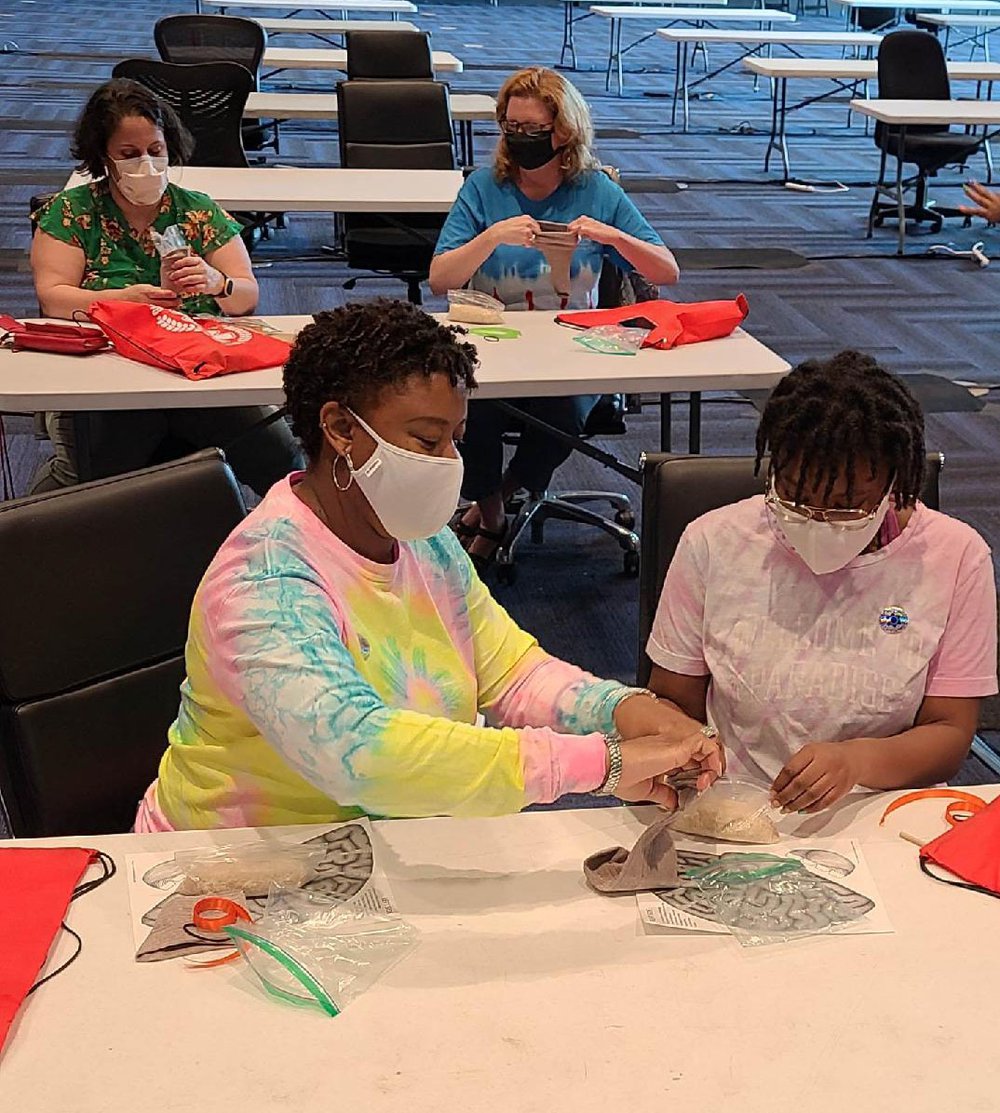
While students who major in neuroscience often choose professions in healthcare such as physician, psychologist, psychiatrist, and neurosurgeon, they also choose lesser-known medically-related professions like speech-language pathologist, neuroimaging technician, and medical research scientist. Other careers for neuroscience majors include jobs in biotechnology and pharmaceutical sales, scientific journalism, and counseling.
Career paths in healthcare are surprisingly diverse and include jobs available to individuals with many levels of education (though most require specific certifications and training). High school graduates may find entry-level healthcare jobs, such as home health aids, medical receptionists, and emergency medical technicians. Other careers (pharmacist, registered nurse, occupational therapist, network administrator, and more) require more intensive training, often found through college and graduate-degree programs.
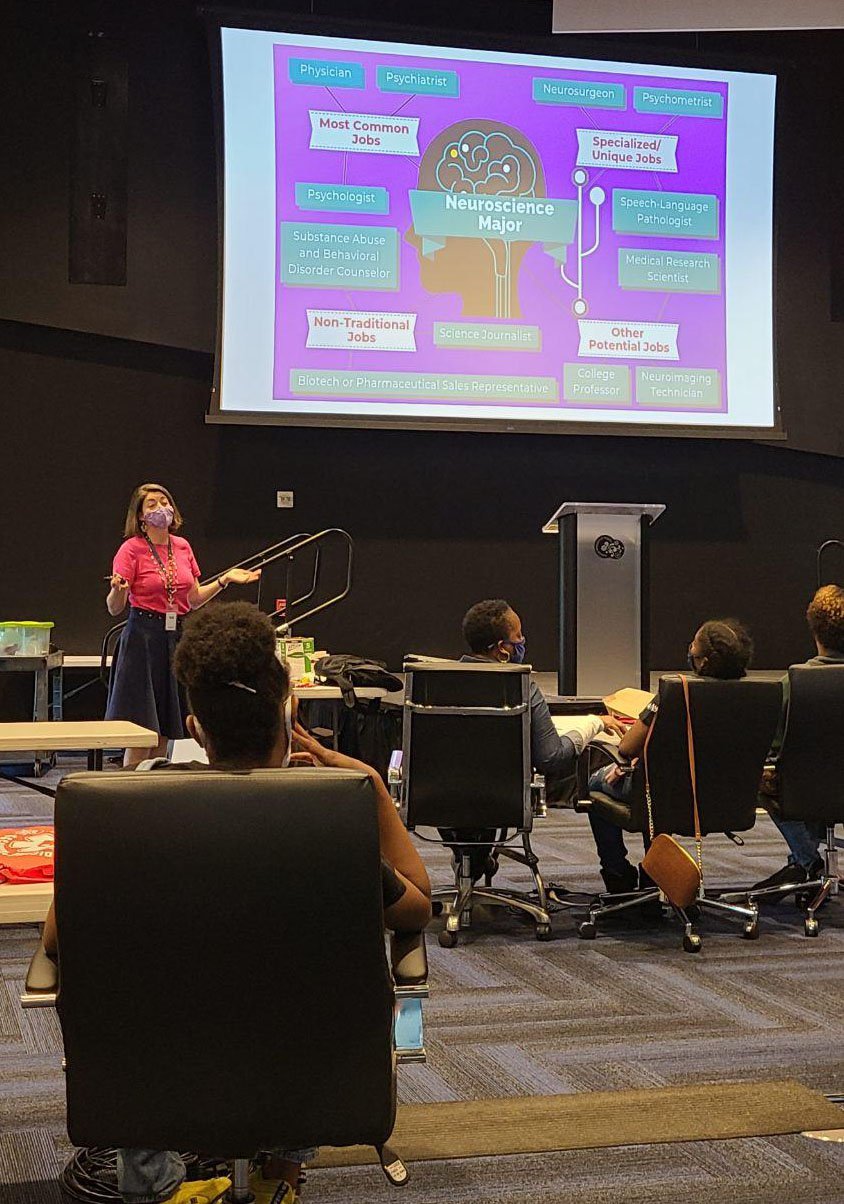
While the pandemic has limited some job opportunities, it has opened others and made some careers much more visible. For those interested in scientific discovery (medically related or not), many places have research jobs. Virginia is home to several biotechnology and pharmaceutical research companies, which employ scientists at various training levels. University labs, and even small medical centers, often have entry-level positions available for enthusiastic future scientists.
With any STEM career path, it’s important to match interests with skills, personality traits, and preferences. Knowing the pace, environment (ex: office or field work), collaboration opportunities, people skills, hours/schedule, and pay scale are also important factors to understand about neuroscience careers. According to the American Association of University Women (AAUW), “Giving women equal opportunities to pursue – and thrive in – STEM careers helps narrow the gender pay gap, enhances women’s economic security, and ensures a diverse and talented STEM workforce and prevents biases in these fields and the products and services they produce.”
And while the career paths listed here are available to our future STEM leaders, it’s worth pointing out that the future holds unexpected jobs, ones that haven’t even been created yet. The neuroscientists, healthcare workers, and medical professionals of today might tell their pre-teen selves about jobs involving the internet ... but the internet didn’t exist when they were planning their career paths!
After showing the Girls in Medicine attendees what career opportunities await them, Dr. Franssen offered this parting advice: build good foundational skills, enjoy your hobbies as you never know when they’ll become useful along your path, and be creative as you explore your future career!


